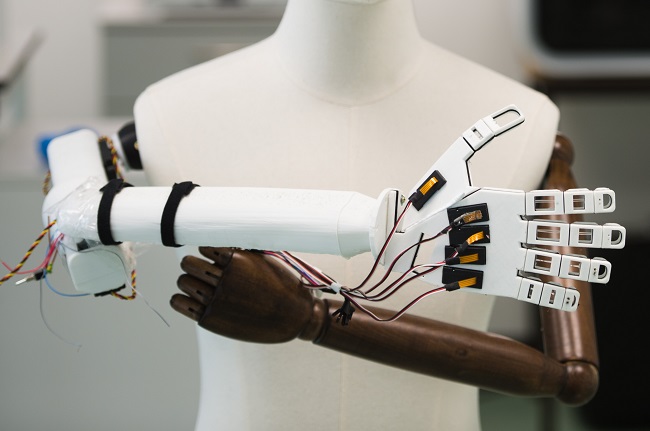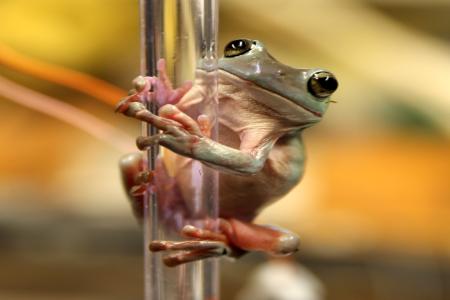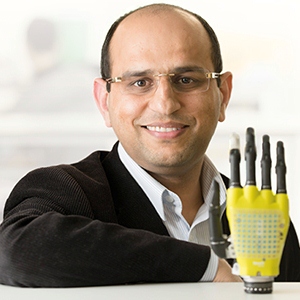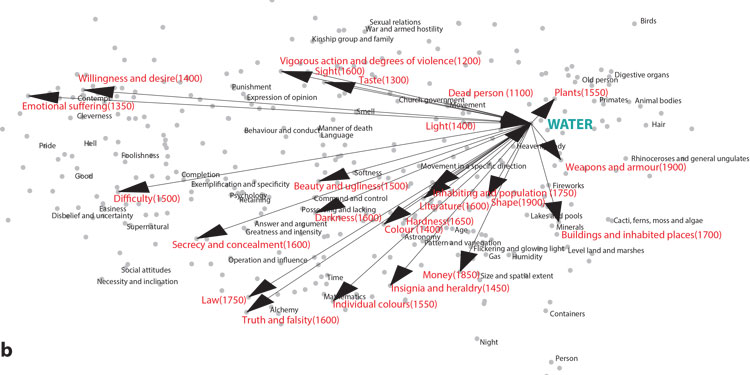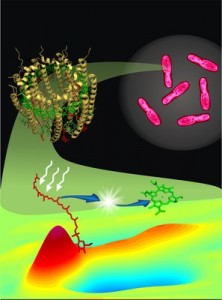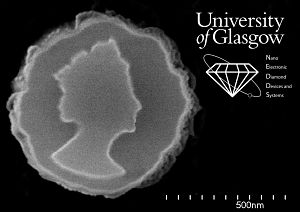The American Chemical Society (ACS) is holding its 256th meeting from August 19 – 22, 2018 in Boston, Massachusetts, US. This August 21, 2018 news item on Nanowerk announces a ‘shipwreck’ presentation at the meeting,
There is a video about the Mary Rose produced by Agence France Presse (AFP) and published on Youtube in May 2013,
We don’t have a ‘Henry VIII’ story or ‘smart nano and shipwrecks’ story but we do have a federal agency devoted to underwater archaeology, Parks Canada Underwater Archaeology webpage,
There’s also a podcast interview with Marc-André Bernier where he discusses an important Canadian shipwreck, from the Library and Archives Canada, Underwater Canada: Investigating Shipwrecks webpage (podcast length 27:25), here’s the transcript for those who prefer reading,
Shipwrecks have stirred up interest in Canada’s maritime heritage for many decades. 2014 marks the 100th anniversary of the sinking of the Empress of Ireland, one of Canada’s worst maritime disasters.
In this episode, Marc-André Bernier, Chief of Parks Canada’s Underwater Archaeology Service, joins us to discuss shipwrecks, their importance in Canadian history, and how LAC plays an important role in researching, discovering and investigating them.
Podcast Transcript
Underwater Canada: Investigating Shipwrecks
Jessica Ouvrard: Welcome to “Discover Library and Archives Canada: Your History, Your Documentary Heritage.” I’m your host, Jessica Ouvrard. Join us as we showcase the treasures from our vaults; guide you through our many services; and introduce you to the people who acquire, safeguard and make known Canada’s documentary heritage.
Canada has a rich maritime history filled with many tragedies, from small boats [lost] in the Great Lakes, to the sinking of the Empress of Ireland in the St. Lawrence River, to Sir John Franklin’s doomed expeditions in the Arctic. The shipwrecks capture our imaginations and evoke images of tragedy, heroism, mystery and discovery. 2014 also marks the 100th anniversary of the sinking of the Empress of Ireland.
Marc-André Bernier, Chief of Parks Canada’s Underwater Archaeology Service, is joining us to discuss shipwrecks and their significance in Canada’s history, and LAC’s important role in the research, discovery and investigation of these shipwrecks.
Hello, Marc-André Bernier. Thank you for coming today.
Marc-André Bernier: My pleasure. Hello to you.
JO: For those who don’t know much about underwater archaeology, can you explain what it is and the risks and challenges that it presents?
MAB: I’ll start with the challenges rather than the risks, because there are obviously risks, but we try to minimize them. Diving is inherently risky. But I’ll start with the challenges because they are, to a certain extent, what characterize underwater archaeology.
We face a series of challenges that are more complicated, that make our work much more complicated than terrestrial archaeology. We work on water and underwater, and our working conditions are dictated by what happens outside, by nature. We can’t work every day on the water, especially if our work involves the sea or the ocean, for example. And when we work underwater, we have to deal with constraints in terms of time and sometimes visibility. That means that we have to be extremely well organized. Preparation is crucial. Logistics are crucial.
In terms of preparation, we need to properly prepare our research using archives and so on, but we also have to be prepared in terms of knowing what’s going on in the field. We need to know the environmental conditions and diving conditions, even when we can’t dive. Increasingly, the work involves heading into deeper areas that can only be reached by robots, by remotely operated equipment. So we have to be able to adapt.
We have to be very precise and very organized because sometimes we have only a few minutes to access a site that will tell us many historical secrets. So we have to come very well prepared.
And when we dive, we’re working in a foreign environment. We have to be good divers, yes, but we also have to have access to tools that will give us access to information. We have to take into account currents, darkness, and so on. The work is really very challenging. But with the rapid development of new technologies in recent years, we have access to more and more tools. We do basically the same work as archaeologists on land. However, the work is done in a completely different environment.
JO: A bit hostile in fact.
MAB: A bit hostile, but with sites, objects and information that are not accessible elsewhere. So there’s an opportunity to learn about history in a different way, and in some cases on a much larger scale.
JO: With all the maritime traffic in Canada, there must have been many accidents. Can you talk about them and give us an idea of the number?
MAB: People don’t realize that we’re a maritime country. We are a country that has evolved and developed around water. This was true even before the Europeans arrived. The First Nations often travelled by water. That travel increased or developed differently, if you will, when the Europeans arrived.
The St. Lawrence River, for example, and the Atlantic provinces were the point of entry and the route. We refer to different waterways, such as the Ottawa and Richelieu rivers. They constituted the route. So, there was heavy traffic, which meant many accidents. We’re talking about probably tens of thousands of shipwrecks if we include the Great Lakes and all the coasts of Canada. Since Canada has the longest coastline in the world, there is potential for shipwrecks. Only a small number of those shipwrecks have been found, but some are very significant and extremely impressive as well.
JO: Are there also many military ships, or is it more…?
MAB: That’s another thing that people don’t realize. There have been many military confrontations in Canadian waters, dating back to the New France era, or when Phips (Sir William Phips) arrived at Quebec City in 1690 and laid siege to the city. He arrived by ship and lost ships when he returned. During the Conquest, there were naval confrontations in Louisbourg, Nova Scotia; in Chaleur Bay; and even at Quebec City. Then, in the War of 1812, the Great Lakes were an extremely important maritime theatre of war in terms of naval battles. There are a number of examples in the Richelieu River.
Then we have the Second World War, with ships and German submarines. We all know the stories of the submarines that came inside the Gulf. So there are many military shipwrecks, from the New France era onward.
JO: What were the most significant shipwrecks in Canada? Have all the shipwrecks been found or…?
MAB: No. There are still shipwrecks that remain to be found. These days at Parks Canada, we’ve been looking for two of the shipwrecks that are considered among the most significant in the country: the HMS Erebus and the HMS Terror, Sir John Franklin’s ships lost in the Arctic. Franklin left England in 1845 to find the Northwest Passage, and he was never heard from again. Those are examples of significant shipwrecks that haven’t been found.
However, significance is always relative. A shipwreck may be very significant, especially if there is loss of life. It’s a tragic event that is deeply affecting. There are many shipwrecks that may not be seen as having national historic significance. However, at the local level, they are tragic stories that have very deep significance and that have profoundly affected an area.
That being said, there are ships that bear witness to memorable moments in the history of our country. Among the national historic sites of shipwrecks are, if we go back, the oldest shipwrecks: the Basque wrecks at Red Bay, Labrador, where whales were hunted in the 16th century. It’s even a UNESCO world heritage site. Then, from the New France era, there’s the Corossol from 1693 and the Phips wrecks from 1690. These are very significant shipwrecks.
Also of great significance are the Louisbourg shipwrecks, the battle site, the Battle of the Restigouche historic site, as well as shipwrecks such as the Hamilton and Scourge from the War of 1812. For all practical purposes, those shipwrecks are intact at the bottom of Lake Ontario. And the Franklin shipwrecks-even if they still haven’t been found-have been declared of national historic significance.
So there’s a wide range of shipwrecks that are significant, but there are thousands and thousands of shipwrecks that have significance. A shipwreck may also be of recreational significance. Some shipwrecks may be a little less historically significant, but for divers, they are exceptional sites for appreciating history and for having direct contact with history. That significance matters.
JO: Yes, they have a bit of a magical side.
MAB: They have a very magical side. When we dive shipwrecks, we travel through history. They give us direct access to our past.
JO: Yes. I imagine that finding a shipwreck is a bit like finding a needle in a haystack?
MAB: It can sometimes be a needle in a haystack, but often it’s by chance. Divers will sometimes stumble upon remains, and it leads to the discovery of a shipwreck. But usually, when we’re looking for a shipwreck, we have to start at the beginning and go to the source. We have to begin with the archives. We have to start by doing research, trying to find every small clue because searching in water over a large area is very difficult and complicated. We face logistical and environmental obstacles in our working conditions. It’s also expensive. We need to use ships and small boats.
There are different ways to find shipwrecks. At one extreme is a method that is technologically very simple. We dive and systematically search an area, if it’s not too deep. At the other extreme, we use the most sophisticated equipment. Today we have what we call robotic research vehicles. It is as sophisticated as launching the device, which is a bit like a self-guided torpedo. We launch it and recover it a few hours later. It carries out a sonar sweep of the bottom along a pre-programmed path. Between the two, we have a range of methods.
Basically, we have to properly define the boundaries of the area. It’s detective work. We have to try to recreate the events and define our search area, then use the proper equipment. The side-scan sonar gives us an image, and magnetometers detect metal. We have to decide which of the tools we’ll use. If we don’t do the research beforehand, we’ll lose a great deal of time.
JO: Have you used the LAC collections in your research, and what types of documents have you found?
MAB: Yes, as often as possible. We try to use the off-site archives, but it’s important to have access to the sources. Our research always starts with the archives. As for the types of documents, I mentioned the Basque documents that were collected through Library and Archives Canada. I’ve personally used colonial archives a lot. For the Corossol sinking in 1693, I remember looking at documents and correspondence that talked about the French recovery from the shipwreck the year after 1693, and the entire Phips epic.
At LAC, there’s a copy of the paintings of Creswell [Samuel Gurney Cresswell], who was an illustrator, painter, and also a lieutenant, in charge of doing illustrations during the HMS Investigator’s journey through the Arctic. So there’s a wide variety of documents, and sometimes we are surprised by the personal correspondence, which gives us details that official documents can’t provide.
JO: How do these documents help you in your research?
MAB: The archival records are always surprising. They help us in every respect. You have to see archaeology as detective work. Every detail is significant. It can be the change in topographical names on old maps that refer to events. There are many “Wreck Points” or “Pointe à la barque,” “Anse à la barque,” and so on. They refer to events. People named places after events. So we can always be surprised by bits of information that seem trivial at first.
It ranges from information on the sites and on the events that led to a shipwreck, to what happened after the sinking and what happened overall. What we want is not only to understand an event, but also to understand the event in the larger context of history, such as the history of navigation. Sometimes, the records provide that broader information.
It ranges from the research information to the analysis afterward: what we have, what we found, what it means and what it says about our history. That’s where the records offer limitless possibilities. We always have surprises. That’s why we enjoy coming to the archives, because we never know what we’ll discover.
JO: Yes, it’s always great to open a box.
MAB: It’s like Christmas. It’s like Christmas when we start delving into archival records, and it’s a sort of prelude to what happens in archaeology. When we reach a site, we’re always excited by what the site has to offer. But we have to be prepared to understand it. That’s why preparation using archives is extremely important to our work.
JO: In terms of LAC sources, do you often look at historical maps? Do you look at the different ones, because we have quite a large collection…
MAB: Quite exceptional, yes.
JO: … from the beginning until now?
MAB: Yes. They provide a lot of information, and we use them, like all sources, as much as possible. We look for different things on the maps. Obviously, we look for places that may show shipwreck locations. These maps may also show the navigation corridors or charts. The old charts show anchorages and routes. They help us recreate navigation habits, which helps us understand the navigation and maritime mindset of the era and gives us clues as to where the ships went and where they were lost.
These maps give us that type of information. They also give us information on the topography and the names of places that have changed over the years. Take the example of the Corossol in the Sept-Îles bay. One of the islands in that bay is called Corossol. For years, people looked for the French ship, the Corossol, near that island. However, Manowin Island was also called Corossol at that time and its name changed. So in the old maps, we traced the origin, and the ship lies much closer to that island. Those are some of the clues.
We also have magnificent maps. One in particular comes to mind. It was created in the 19th century on the Îles-de-la-Madeleine by an insurance company agent who made a wreck map of all the shipwrecks that he knew of. To us, that’s like candy. It’s one of the opportunities that maps provide. Maps are magnificent even if we don’t find clues. Just to admire them-they’re absolutely magnificent.
JO: From a historical point of view, why is it important to study shipwrecks?
MAB: Shipwrecks are in fact a microcosm. They represent a small world. During the time of the voyage, there was a world of its own inside the ship. That in itself is interesting. How did people live on board? What were they carrying? These are clues. The advantage of a shipwreck is that it’s like a Polaroid, a fixed image of a specific point in time. When we study a city such as Quebec City that has been continuously occupied, sometimes it’s difficult to see the separation between eras, or even between events. A shipwreck shows a specific time and specific place.
JO: And it’s frozen in time.
MAB: And it’s frozen in time. So here’s an image, in 1740, what did we have? Of course, we find objects made in other eras that were still in use in that time period. But it really gives us a fixed image, a capsule. We often have an image of a time capsule. It’s very useful, because it’s very rare to have these mini Pompeiis, and we have them underwater. It’s absolutely fascinating and interesting. It’s one of the contributions of underwater archaeology.
The other thing is that we don’t necessarily find the same type of material underwater as on land. The preservation conditions are completely different. On land, we find a great deal of metal. Iron stays fairly well preserved. But there’s not much organic material, unless the environment is extremely humid or extremely dry. Underwater, organic materials are very well preserved, especially if the sedimentation is fairly quick. I remember finding cartouches from 1690 that still had paper around them. So the preservation conditions are absolutely exceptional.
That’s why it’s important. The shipwrecks give us unique information that complements what we find on land, but they also offer something that can’t be found elsewhere.
JO: I imagine that there are preservation problems once it’s…
MAB: And that’s the other challenge.
JO: Yes, certainly.
MAB: If an object is brought up, we have to be ready to take action because it starts to degrade the moment we move it…
JO: It comes into contact with oxygen.
MAB: … Yes, but even when we move it, we expose it to a new corrosion, a new degradation. If we bring it to the surface right away, the process accelerates very quickly. We have to keep the object damp. We always have to be ready to take action. For example, if the water heats up too fast, micro-organisms may develop that accelerate the degradation. We then have to be ready to start preservation treatments, which can take years depending on the object. It’s an enormous responsibility and we have to be ready to handle it, if not, we destroy…
JO: … the heritage.
MAB: … what we are trying to save, and that’s to everyone’s detriment.
JO: Why do you think that people are so fascinated by archaeology, and more specifically by shipwrecks?
MAB: That’s also a paradox. We say that people aren’t interested in history. I am firmly convinced that people enjoy history and are interested in it. It must be well narrated, but people are interested in history. There’s already an interest in our past and in our links with the past. If people feel directly affected by the past, they’ll be fascinated by it. If we add on top of that the element of discovery, and archaeology is discovery, and all the myths surrounding artefact hunters…
JO: … treasure hunters.
MAB: … treasures, and so on. It’s an image that people have. Yes, we hunt treasure, but historical treasure. That image applies even more strongly to shipwrecks. There’s always that myth of the Spanish galleon filled with gold. Everyone thinks that all shipwrecks contain a treasure. That being said, there’s a fascination with discovery and with the past, and add on top of that the notion of the bottom of the sea: it’s the final frontier, where we can be surprised by what we discover. Since these discoveries are often remarkably well preserved, people are absolutely fascinated.
We grow up with stories of pirates, shipwrecks and lost ships. These are powerful images. A shipwreck is an image that captures the imagination. But a shipwreck, when we dive a shipwreck, we have direct contact with the past. People are fascinated by that.
JO: Are shipwreck sites accessible to divers?
MAB: Shipwreck sites are very accessible to divers. For us, it’s a basic principle. We want people to be able to visit these sites. Very rarely do we limit access to a site. We do, for example, in Louisbourg, Nova Scotia. The site is accessible, but with a guide. The site must be visited with a guide because the wrecks are unique and very fragile.
However, the basic principle is that, as I was saying, we should try to allow people to savour and absorb the spirit of the site. The best way is to visit the site. So there are sites that are accessible, and we try to make them accessible. We not only make them accessible, but we also promote them. We’re developing tools to provide information to people.
It’s also important to raise awareness. We have the opportunity and privilege to visit the sites. We have to ensure that our children and grandchildren have the same opportunity. So we have to protect and respect [the sites]. In that spirit, the sites have to be accessible because these experiences are absolutely incredible. With technology, we can now make them accessible not only to divers but also virtually, which is interesting and stimulating. Nowadays there are opportunities to make all these wonders available to as many people as possible, even if they don’t have the chance to dive.
JO: How long has Parks Canada been involved in underwater archaeology?
MAB: 2014 marks the 50th anniversary of the first dives at Fort Lennox in 1964 by Sean Gilmore and Walter Zacharchuk. That’s where it began. We’re going back there in August of this year, to the birthplace of underwater archaeology at Parks Canada.
We’re one of the oldest teams in the world, if we can say that. The first time an archaeologist dived a site was in 1960, so we were there basically at the beginning. Parks Canada joined the adventure very early on and it continues to be a part of it to this day. I believe that we’ve studied 225 sites across Canada, in the three oceans, the Great Lakes, rivers, truly across the entire country. We have a wealth of experience, and we’ll celebrate that this year by returning to Fort Lennox where it all began.
JO: Congratulations!
MAB: Thank you very much.
JO: 2014 marks the 100th anniversary of the sinking of the Empress of Ireland. What can you tell us about this maritime accident?
MAB: The story of the Empress begins on May 28, 1914. The Empress of Ireland left Quebec City for England with first, second and third class passengers on board. The Empress left Quebec in the late afternoon, with more than 1,400 passengers and crew on board. The ship headed down the St. Lawrence to Pointe au Père, a pilot station, because pilots were needed to navigate the St. Lawrence, given the reefs and hazards.
The pilot left the Empress at the Pointe au Père pilot station, and the ship resumed her journey. At the same time, the Storstad, a cargo ship, was heading in the opposite direction. In the fog, the two ships collided. The Storstad rammed the Empress of Ireland, creating a hole that immediately filled with water.
At that moment, it was after 1:30 a.m., so almost 2:00 a.m. It was night and foggy. The ship sank within 14 minutes, with a loss of 1,012 lives. Over 400 people survived, but over 1,000 people [died]. Many survivors were pulled from the water either by the ship that collided with the Empress or by other ships that were immediately dispatched.
JO: 14 minutes…
MAB: … In 14 minutes, the ship sank. The water rushed in and the ship sank extremely fast, leaving very little opportunity for people, especially those deeper inside the ship, to save themselves.
JO: So a disaster.
MAB: The greatest maritime tragedy in the history of the country.
JO: What’s your most unforgettable experience at an underwater archaeology site?
MAB :I’ve been doing this job for 24 years now, and I can tell you that I have had extraordinary experiences! There are two that stand out.
One was a Second World War plane in Longue-Pointe-de-Mingan that sank after takeoff. Five of the nine crew members drowned in the plane. In 2009, the plane was found intact at a depth of 40 metres. We knew that five of the crew members were still inside. What was absolutely fascinating, apart from the sense of contact and the very touching story, was that we had the opportunity, chance and privilege to have people who were on the beach when the event occurred, who saw the accident and who saw the soldiers board right beforehand. They told us how it happened and they are a direct link. They are part of the history and they experienced that history.
That was an absolutely incredible human experience. We worked with the American forces to recover the remains of the soldiers. Seeing people who had witnessed the event and who could participate 70 years later was a very powerful moment. Diving the wreck of that plane was truly a journey through time.
The other experience was with the HMS Investigator in the Arctic. That’s the ship that was credited with discovering the Northwest Passage. Actually, the crew found it, since the ship remained trapped in the ice and the crew continued on foot and were saved by another ship. The ship is practically intact up to the upper deck in ten metres of water. When you go down there, the area is completely isolated. The crew spent two winters there. On land we can see the remains of the equipment that they left on the ground. Three graves are also visible. So we can absorb the fact that they were in this environment, which was completely hostile, for two years, with the hope of being rescued.
And the ship: we then dive this amazing exploration machine that’s still upright, with its iron-clad prow to break the ice. It’s an icebreaker from the 1850s. We dive on the deck, with the debris left by the ice, the pieces of the ship completely sheared off by the ice. But underneath that is a complete ship, and on the inside, everything that the people left on board.
I often say that it’s like a time travel machine. We are transported and we can absorb the spirit of the site. That’s what I believe is important, and what we at Parks [Canada] try to impart, the spirit of the site. There was a historic moment, but it occurred at a site. That site must be seen and experienced for maximum appreciation. That’s part of the essence of the historic event and the site. On that site, we truly felt it.
JO: Thank you very much for coming to speak with us today. We greatly appreciate your knowledge of underwater Canada. Thank you.
MAB: Thank you very much.
JO: To learn more about shipwrecks, visit our website Shipwreck Investigations at lac-bac.gc.ca/sos/shipwrecks or read our articles on shipwrecks on thediscoverblog.com [I found other subjects but not shipwrecks in my admittedly brief search of the blog].
Thank you for joining us. I’m your host, Jessica Ouvrard, and you’ve been listening to “Discover Library and Archives Canada-where Canadian history, literature and culture await you.” A special thanks to our guest today, Marc-André Bernier.
A couple of comments. (1) It seems that neither Mr. Bernier nor his team have ever dived on the West Coast or west of Ottawa for that matter. (2) Given Bernier’s comments about oxygen and the degradation of artefacts once exposed to the air, I imagine there’s a fair of amount of excitement and interest in Corr’s work on ‘smart nanotech’ for shipwrecks.
